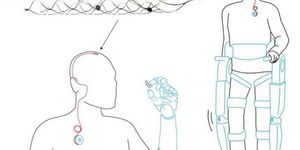Scientists at the University of Liverpool recently
unveiled an electronic “smell” test for prostate cancer detection. The test is an important leap forward, with the possibility of replacing traditional invasive diagnostic procedures that are currently in practice.
Prostate cancer represents a huge health risk for half the world’s population, as it is the most common form of cancer in men. Current detection methods include the wince-inducing digital rectal exam (DRE) and blood tests that measure prostate-specific antigen (PSA). However, prostate cancer can only be truly confirmed with invasive prostate biopsies.
"There is an urgent need to identify these cancers at an earlier stage when they are more treatable as the earlier a person is diagnosed the better,” said Professor Chris Probert, senior study author from the University of Liverpool.
PSA levels for healthy men are usually less than 4 nanograms per milliliter (ng/mL) of blood. However, having more or less PSA than that range doesn’t guarantee cancer or no cancer, respectively. Furthermore, PSA level cutoffs are not standardized, which contributes to increased cases of false negatives and false positives. “This can sometimes result in unnecessary biopsies, resulting in psychological toll, risk of infection from the procedure and even sometimes missing cancer cases,” said Professor Norman Ratcliffe, co-author of the study.
To be more precise at identifying prostate cancer while simultaneously being easier to perform and withstand, the research team developed the “
Odoreader,” a gas-chromatography sensor that detects chemical patterns in urine. Likened to an electronic “nose,” the Odoreader has a 30-meter column through which urine samples get broken into their smaller chemical constituents. These “odor” patterns are then translated and matched, enabling cancer identification from the urine.
In a pilot study with 155 men from urology clinics, the Odoreader diagnosed 58 men with prostate cancer, 24 men with bladder cancer, and 73 men with urinary problems unrelated to cancer. The team reported an impressive 95% sensitivity and 96% specificity after validation, showing that the system has both high accuracy and precision.
The sniff test could save men who test negative from undergoing invasive prostate biopsies. Conversely, positive cancer profiles in urine samples would alert doctors and crucial treatments could proceed without delay.
The team is excited about the success of the Odoreader and is already planning the next steps. “After further sample testing, the next step is to take this technology and put it into a user-friendly format. With help from industry partners we will be able to further develop the Odoreader, which will enable it to be used where it is needed most; at a patient's bedside, in a doctor's surgery, in a clinic or Walk In Centre, providing fast, inexpensive, accurate results," said Probert.
Additional source:
MNT









